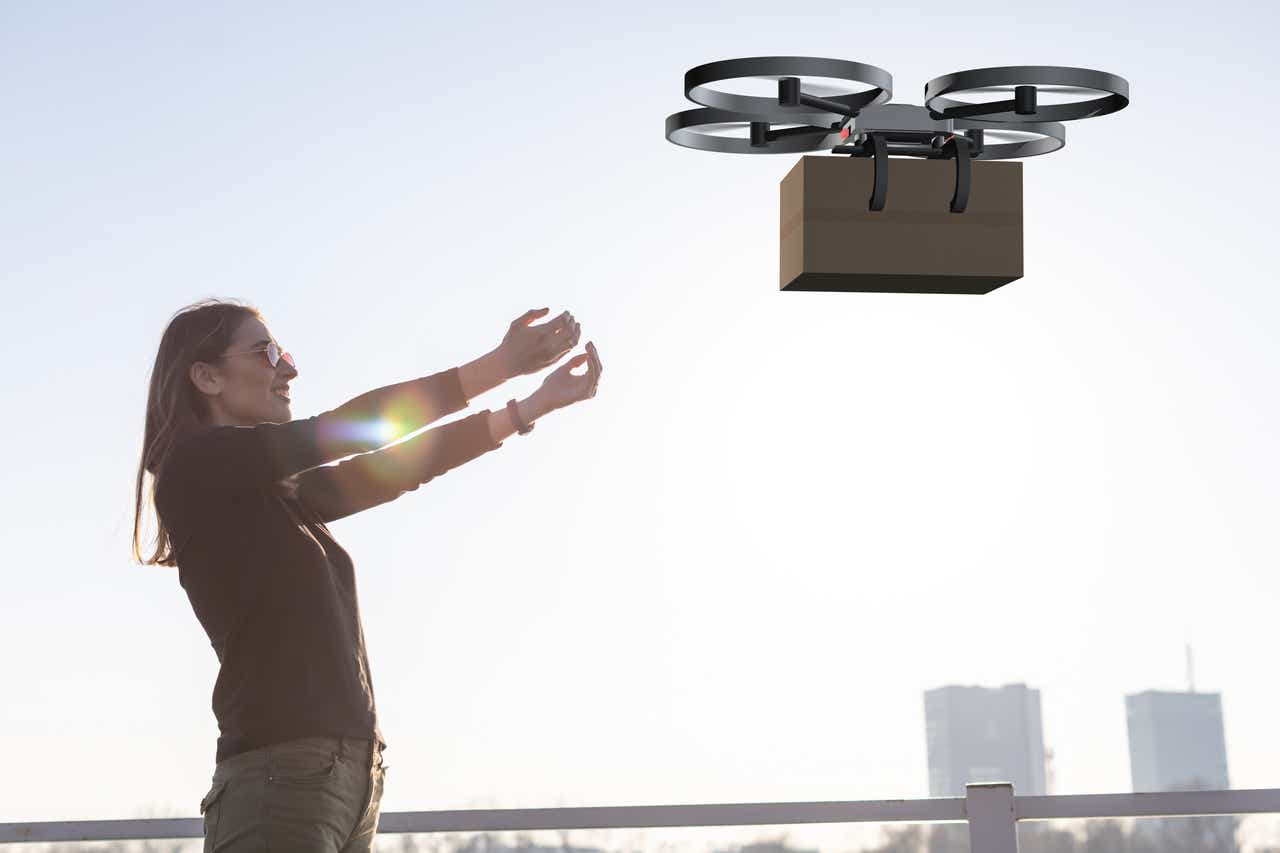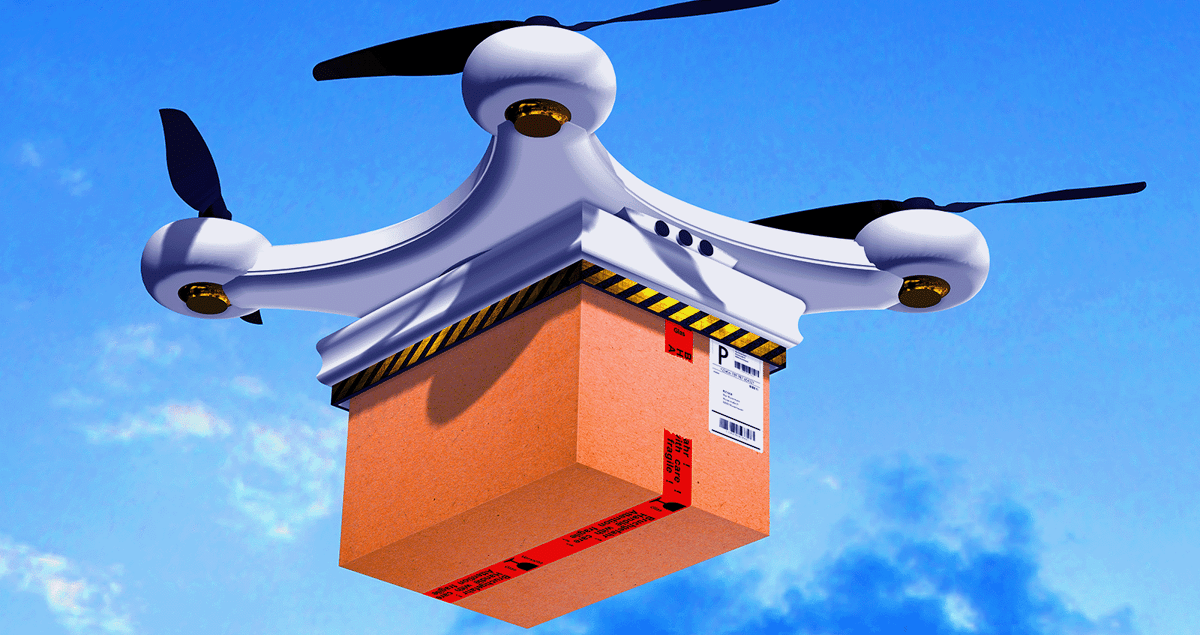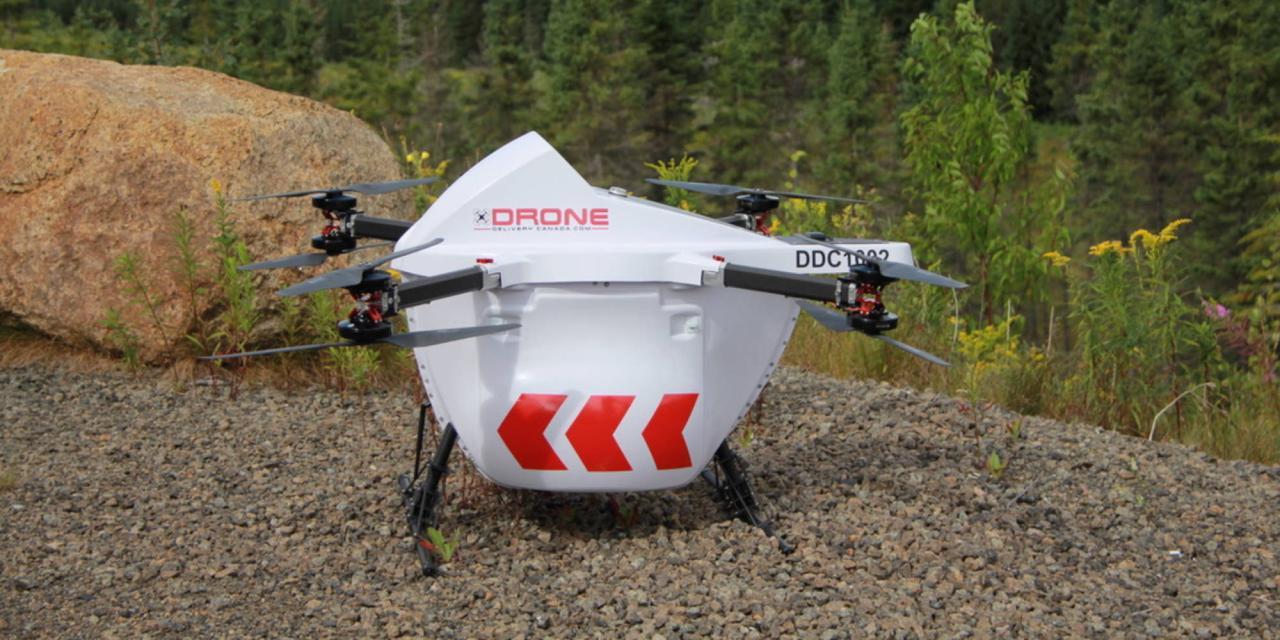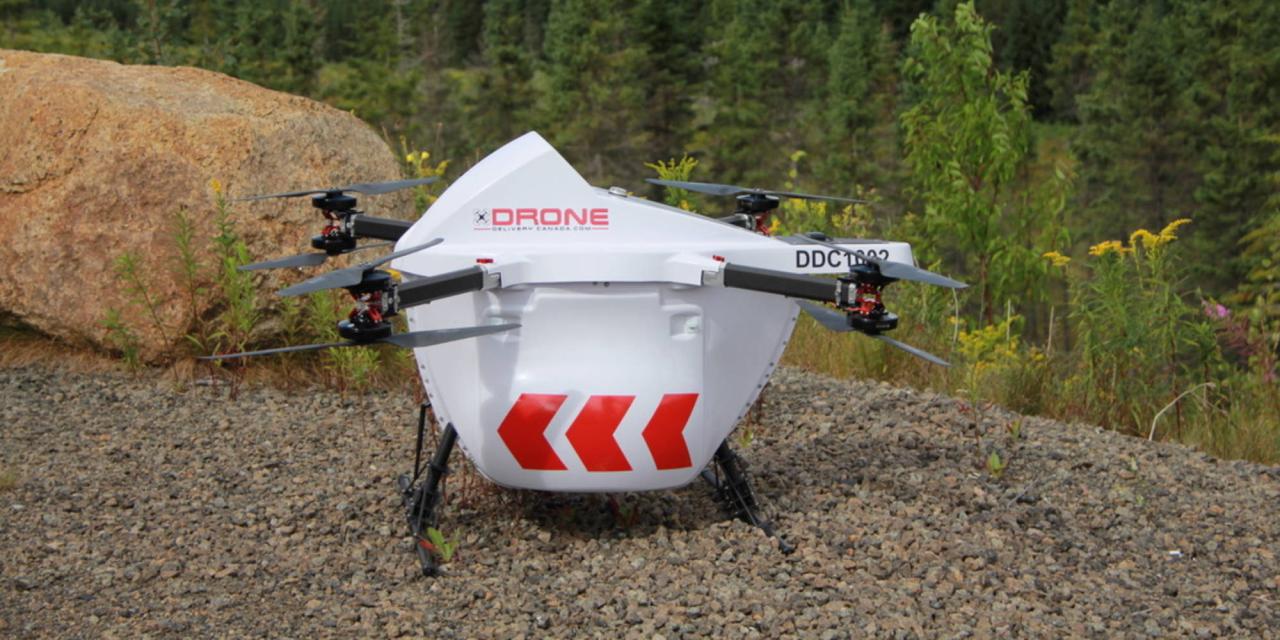Drone delivery Canada stock presents a fascinating investment opportunity, riding the wave of technological advancement and changing logistics. This burgeoning sector promises efficiency gains and new possibilities, but also faces regulatory hurdles and technological challenges. Understanding the key players, their business models, and the regulatory landscape is crucial for navigating this exciting yet complex market. This exploration delves into the Canadian drone delivery scene, examining market potential, investment risks, and the future of this innovative industry.
We’ll examine publicly traded Canadian companies involved in drone delivery, comparing their strategies, financial performance, and technological approaches. We’ll also analyze the regulatory environment in Canada, discussing both the opportunities and obstacles it presents. Finally, we’ll look at the potential market size, investment opportunities, and the infrastructure required to support the widespread adoption of drone delivery across Canada.
Canadian Drone Delivery Companies: A Deep Dive: Drone Delivery Canada Stock
The Canadian drone delivery landscape is rapidly evolving, with several companies vying for a piece of this burgeoning market. Understanding the key players, their strategies, and the regulatory environment is crucial for anyone interested in investing in or following this sector.
Thinking about investing in drone delivery Canada stock? A key factor to consider is the reliability of the drones themselves. Maintaining a fleet requires regular upkeep, and if you’re using DJI drones, you’ll want to know where to find quality dji drone repair services. This ensures minimal downtime and keeps your potential investment running smoothly, maximizing returns on your drone delivery Canada stock.
Publicly Traded Canadian Drone Delivery Companies
While a definitive list of publicly traded
-pure-play* drone delivery companies in Canada is limited, several publicly traded companies are significantly involved in drone technology and its application to delivery services. Identifying these companies and comparing their approaches provides valuable insight into the industry’s competitive dynamics.
Let’s analyze three companies (Note: The availability and specifics of publicly traded companies involved in drone delivery in Canada may change, so this information should be verified with current financial data):
- Company A (Hypothetical Example): Focuses on last-mile delivery in urban areas using small, agile drones. Their business model emphasizes speed and efficiency in densely populated regions.
- Company B (Hypothetical Example): Specializes in drone delivery for rural and remote communities, leveraging larger drones with extended range capabilities. Their model targets underserved areas with limited transportation infrastructure.
- Company C (Hypothetical Example): Develops and integrates drone delivery technology into existing logistics networks. Their business model involves partnerships with established logistics providers, offering drone delivery as a supplementary service.
Comparative Analysis of Canadian Drone Delivery Companies

The following table provides a comparison of hypothetical market capitalization, revenue, and recent stock performance. Remember that real-time financial data is crucial for accurate analysis and should be sourced from reputable financial websites.
| Company | Market Cap (CAD, in millions) | Revenue (CAD, in millions) | Recent Stock Performance (Last Quarter %) |
|---|---|---|---|
| Company A | 500 | 25 | +10% |
| Company B | 300 | 15 | -5% |
| Company C | 750 | 40 | +15% |
Canadian Drone Delivery Regulations

The regulatory landscape significantly impacts the growth and development of the Canadian drone delivery industry. Transport Canada sets the rules for commercial drone operations, emphasizing safety and security.
Current regulations cover aspects such as pilot licensing, drone registration, operational limitations, and airspace management. These regulations, while crucial for safety, can also pose challenges to rapid expansion. Companies must navigate complex approval processes and adhere to strict operational guidelines.
A hypothetical regulatory framework could incorporate a tiered licensing system, allowing for graduated levels of autonomy and operational complexity based on risk assessment. This could foster innovation while maintaining a high safety standard.
Technological Advancements in Canadian Drone Delivery
Significant technological advancements have propelled the Canadian drone delivery sector forward in recent years. These improvements encompass drone design, navigation systems, and autonomous flight capabilities.
Thinking about investing in drone delivery Canada stock? A big part of that future is the drones themselves! To understand the technology, you should check out this helpful guide on which DJI drone to buy , as the right drone choice impacts efficiency and profitability for delivery companies. Ultimately, your understanding of the drone tech itself will inform your investment decisions in the drone delivery market.
- 2019: Increased adoption of sense-and-avoid technologies for enhanced safety.
- 2020: Development of drones with improved payload capacity and range, enabling longer delivery routes.
- 2021: Integration of advanced AI algorithms for autonomous navigation and obstacle avoidance.
- 2022: Expansion of beyond visual line of sight (BVLOS) operations under controlled conditions.
- 2023: Exploration of drone delivery networks using drone-to-drone delivery and swarm technologies.
Market Potential and Investment Opportunities in Canadian Drone Delivery
The market for drone delivery services in Canada holds substantial potential for growth over the next decade. Several factors contribute to this promising outlook, including increasing e-commerce adoption, the need for efficient healthcare delivery in remote areas, and advancements in drone technology.
Growth sectors include healthcare (delivering medical supplies and pharmaceuticals), e-commerce (fast and convenient delivery of goods), and rural areas (bridging the gap in transportation infrastructure).
| Factor | Strengths | Weaknesses | Opportunities | Threats |
|---|---|---|---|---|
| Technology | Rapid advancements in drone technology | Technological risks and reliability issues | Development of more efficient and autonomous drones | Competition from established logistics companies |
| Regulation | Clear regulatory framework (with potential for improvement) | Complex approval processes and operational restrictions | Streamlined regulatory processes to foster innovation | Changes in regulations that hinder growth |
| Market | Growing e-commerce and healthcare sectors | Limited market awareness and consumer adoption | Expansion into new market segments (e.g., construction, agriculture) | Economic downturns and shifts in consumer preferences |
Drone Delivery Infrastructure in Canada
The existing infrastructure for drone delivery in Canada is still in its early stages of development. However, key components include charging stations, communication networks, and air traffic management systems.
Expansion requires investments in robust communication networks, especially in rural areas, and the development of secure and efficient charging infrastructure. Integration with existing air traffic management systems is essential for safe and coordinated drone operations.
An ideal infrastructure in a major Canadian city would include a network of strategically located charging stations with redundant power supplies, secure communication links using 5G or similar technology, and integrated air traffic management software to monitor and control drone movements in real-time. This system would need to be scalable and adaptable to accommodate the growing number of drones.
Case Studies of Canadian Drone Delivery Initiatives, Drone delivery canada stock
Analyzing successful and unsuccessful drone delivery projects provides valuable lessons for future initiatives. Success hinges on factors such as regulatory compliance, technological reliability, and effective logistics management. Failure often stems from underestimating technological challenges, neglecting regulatory requirements, or misjudging market demand.
One hypothetical example of a successful initiative could involve a company that successfully partnered with a healthcare provider to deliver urgently needed medications to remote communities, overcoming logistical challenges and regulatory hurdles. A hypothetical example of an unsuccessful initiative could be a company that launched a large-scale urban delivery service without adequate testing or regulatory approvals, leading to operational disruptions and safety concerns.
Thinking about investing in drone delivery Canada stock? It’s a hot market, but understanding the global picture is key. Check out this resource on drone sightings around the world to get a feel for the expanding use of drones and how that might impact the Canadian market. Ultimately, increased drone activity globally suggests potential growth for drone delivery companies in Canada.
These case studies highlight the importance of thorough planning, regulatory compliance, and robust technological solutions for successful drone delivery operations in Canada.
Last Word

The Canadian drone delivery market is poised for significant growth, offering intriguing investment prospects. While challenges remain in terms of regulation and technology, the potential benefits in efficiency and reach are undeniable. Careful consideration of the individual companies, their strategies, and the evolving regulatory landscape is essential for investors. The future of drone delivery in Canada is bright, but success will hinge on overcoming technological hurdles, navigating the regulatory framework, and adapting to the dynamic market conditions.
Common Queries
What are the major risks associated with investing in drone delivery stocks?
Major risks include regulatory uncertainty, technological setbacks, competition, and the overall volatility of the stock market.
How is drone delivery impacting rural communities in Canada?
Drone delivery offers the potential to improve access to goods and services in remote areas, overcoming challenges posed by distance and infrastructure limitations.
What are the environmental considerations of drone delivery?
Environmental impacts need careful consideration, including energy consumption, noise pollution, and potential effects on wildlife. Sustainable practices and technologies are crucial for minimizing negative consequences.
Are there any ethical concerns surrounding drone delivery?
Ethical concerns include data privacy, security risks, job displacement, and potential misuse of the technology. Addressing these issues proactively is essential for responsible development and deployment.
